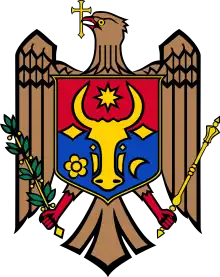 | |
Former names | Taras Shevchenko State Pedagogical Institute (1933–1992) |
|---|---|
| Motto | Latin: Per Ardua ad Astra "Through Adversity to the Stars" |
| Type | Public |
| Established | 1930 |
| Rector | Stepan Beril (PSU) Eduard Coropceanu (UST) |
| Students | 11,000 (PSU) |
| Location | , |
| Website | www.spsu.ru (PSU) www.ust.md (UST) |
Two universities claim the succession of the Taras Shevchenko State University of Tiraspol: Transnistrian State University (Russian: Приднестровский государственный университет имени Т. Г. Шевченко) located in Tiraspol, Transnistria, and Tiraspol State University (Romanian: Universitatea de Stat din Tiraspol) located in Chișinău, Moldova.
History
The original university in Tiraspol was founded in 1930 as the State Pedagogical Institute in the Moldavian Autonomous Soviet Socialist Republic (MASSR), then being a constituent part of the Ukrainian SSR located in modern Transnistria. The institution was renamed in 1939 to honor the Ukrainian poet and painter Taras Shevchenko, on his 125th birthday.
In 1940, after the Soviet occupation of Bessarabia, part of the territory of the MASSR, including the city of Tiraspol, was allocated to the new Moldavian SSR formed by the Soviets.
In July 1992, as a result of the Transnistria War, the university was officially moved to Chișinău, where it continues to function under the name of Tiraspol State University (UST),[1] while in Tiraspol it was reorganized as the Transnistrian State University (PSU). Thus the university was split in two, both claiming to be the original institution founded in 1930.
PSU

In Tiraspol, the university consists of 12 buildings. It offers internationally accredited courses in partnerships with universities in Russia. Students can study both internally and in absentia. Not only citizens of Transnistria can study there but also people from abroad. Education can be both free and paid. The university employs over 1,000 teaching staff including 36 Doctors and 220 Masters of Science.[2][3] Among its publications, the Atlas of Transnistria is often used as a source for data, specialized maps and statistics on Transnistria.
The university has 8 faculties and 84 chairs, offering 54 different majors. Classes are taught mainly in Russian, with only a few programs in Romanian (called "Moldavian in Cyrillic script") and Ukrainian.[4]
- Agrarian and Technological Faculty
- Faculty of Natural Geography
- Faculty of Medicine
- Faculty of Pedagogy and Psychology
- Faculty of Physical Education and Sports
- Faculty of Physics and Mathematics
- Faculty of Philology
- Faculty of Economics
There are also four institutes and branches.
UST
In Chișinău, the university has 5 faculties and 7 departments, offering studies in 42 specialties, 17 specializations, and 5 scientific specialties.[5]
- Faculty of Physics, Mathematics and Information Technologies
- Faculty of Biology and Chemistry
- Faculty of Philology
- Faculty of Geography
- Faculty of Pedagogy
